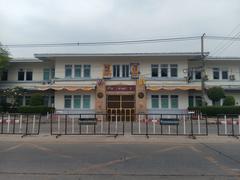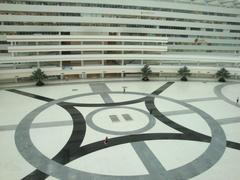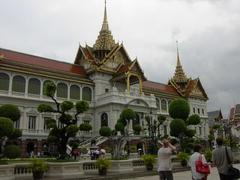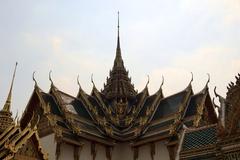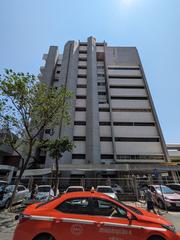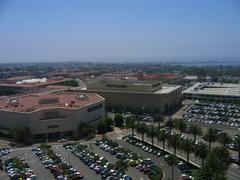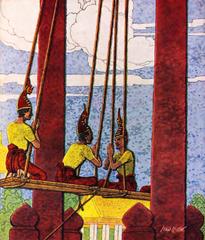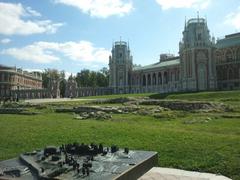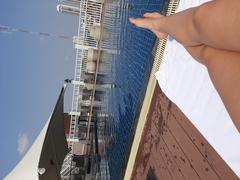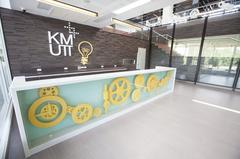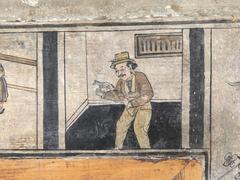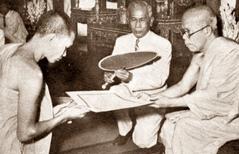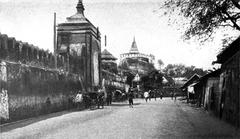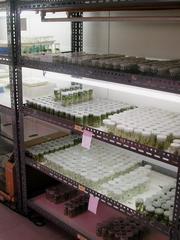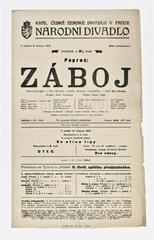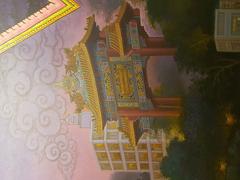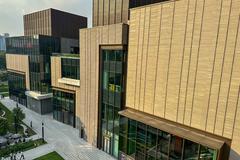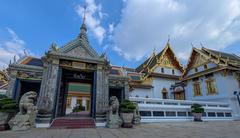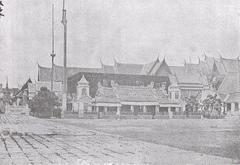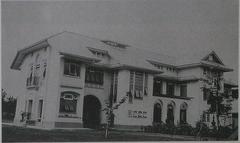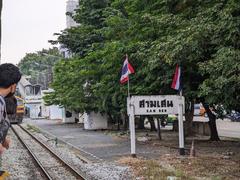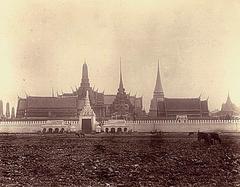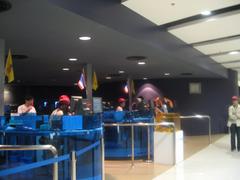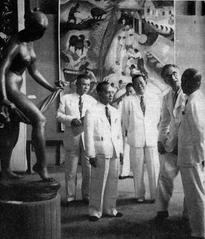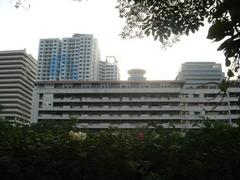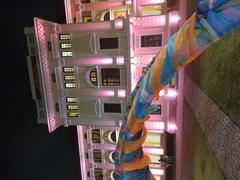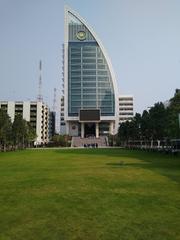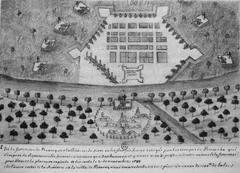Visiting Saranrom Park: Hours, Tickets, and Attractions in Bangkok
Date: 19/07/2024
Introduction
Saranrom Park, located in the heart of Bangkok, Thailand, is a captivating green space that offers visitors a unique blend of historical, cultural, and natural attractions. Established in 1866 during the reign of King Rama IV, the park was initially part of the Saranrom Palace grounds, which served as a royal residence and a venue for state functions. Over time, the palace grounds were transformed into a public park, officially opening to the public in 1960 (Official Bangkok Tourism Website).
The park’s historical significance is deeply intertwined with Thailand’s royal heritage and urban development. It has served as a place of leisure and relaxation for the royal family and has hosted numerous royal ceremonies and events. Today, Saranrom Park remains an important cultural and recreational space, attracting both locals and tourists who come to enjoy its serene environment, botanical gardens, and historical monuments (Historical Sites of Bangkok).
In this guide, we will explore the rich history of Saranrom Park, its architectural and botanical features, visitor information, and tips for making the most of your visit. Whether you’re a history enthusiast, a nature lover, or simply looking for a peaceful retreat in the bustling city of Bangkok, Saranrom Park has something to offer for everyone.
Table of Contents
- Introduction
- Origins and Establishment
- Royal Connections
- Transition to Public Park
- Architectural and Botanical Features
- Historical Events and Cultural Significance
- Visitor Information
- Preservation and Modernization Efforts
- Educational and Recreational Role
- FAQ
- Conclusion
Origins and Establishment
Saranrom Park has a rich history that dates back to the 19th century. The park was originally part of the Saranrom Palace, constructed in 1866 during the reign of King Rama IV (King Mongkut). The palace was intended to serve as a residence for visiting foreign dignitaries and members of the royal family. The park itself was designed as a private garden for the palace, showcasing a blend of Western and Thai landscaping styles.
Royal Connections
The park’s connection to the Thai monarchy is significant. King Rama V (King Chulalongkorn) frequently used the palace and its gardens for various royal ceremonies and events. The park was a place of leisure and relaxation for the royal family and played a crucial role in the social and cultural life of the Thai elite during the late 19th and early 20th centuries. The palace and its gardens symbolized the modernization efforts undertaken by King Rama V, who sought to blend traditional Thai culture with Western influences.
Transition to Public Park
In 1960, Saranrom Park was officially opened to the public by the Bangkok Metropolitan Administration. This transition marked a significant shift in the park’s role, transforming it from a private royal garden to a public space accessible to all. The opening of the park to the public was part of a broader effort to provide green spaces in Bangkok, which was rapidly urbanizing at the time. The park’s historical significance and its beautiful landscaping made it an immediate attraction for both locals and tourists.
Architectural and Botanical Features
Saranrom Park is renowned for its architectural and botanical features. The park retains several structures from its days as a royal garden, including the Saranrom Palace, which now houses the Ministry of Foreign Affairs. The park also features a variety of statues and monuments, including a statue of King Rama V, which serves as a reminder of the park’s royal heritage.
Botanically, the park is home to a diverse array of plant species, both native and exotic. The garden’s design reflects the influence of Western botanical gardens, with carefully planned flower beds, ornamental trees, and water features. The park’s layout and plant selection were intended to create a serene and aesthetically pleasing environment, providing a respite from the hustle and bustle of Bangkok.
Historical Events and Cultural Significance
Over the years, Saranrom Park has been the site of numerous historical events and cultural activities. During the early 20th century, the park hosted various royal ceremonies and public events, including celebrations for the Thai New Year (Songkran) and other cultural festivals. The park’s open spaces and beautiful surroundings made it an ideal location for such gatherings.
In more recent times, Saranrom Park has continued to play a role in Bangkok’s cultural life. The park is a popular venue for concerts, exhibitions, and other public events. Its historical significance and central location make it a focal point for both cultural and recreational activities in the city.
Visitor Information
Visiting Hours: Saranrom Park is open daily from 5:00 AM to 9:00 PM.
Ticket Prices: Admission to the park is free of charge.
Accessibility: The park is wheelchair accessible and offers facilities such as restrooms and seating areas for visitors with disabilities.
Travel Tips:
- Best Time to Visit: Early morning or late afternoon to avoid the midday heat.
- Nearby Attractions: The Grand Palace, Wat Pho, and the National Museum are all within walking distance.
- Guided Tours: Available through various tour operators, offering historical insights and botanical information.
- Photography Spots: The statue of King Rama V, the ornamental gardens, and the water features are popular for photography.
Preservation and Modernization Efforts
In recent years, there have been ongoing efforts to preserve and modernize Saranrom Park. The Bangkok Metropolitan Administration has undertaken various projects to maintain the park’s historical structures and enhance its facilities. These efforts include the restoration of the park’s statues and monuments, the renovation of pathways and seating areas, and introducing new amenities such as playgrounds and exercise equipment.
The preservation of the park’s botanical heritage is also a priority. Efforts are made to maintain the diversity of plant species and ensure that the park’s gardens continue to reflect their historical design. These preservation and modernization efforts aim to balance the park’s historical significance with the needs of contemporary visitors.
Educational and Recreational Role
Today, Saranrom Park serves an important educational and recreational role. The park’s historical features and botanical diversity make it a valuable resource for educational programs and activities. Schools and universities often use the park for field trips and outdoor classes, providing students with an opportunity to learn about Thai history, culture, and botany in a hands-on environment.
Recreationally, the park offers a variety of activities for visitors of all ages. The park’s open spaces and well-maintained gardens provide a perfect setting for picnics, leisurely walks, and outdoor sports. The park’s playgrounds and exercise equipment cater to families and fitness enthusiasts, making it a popular destination for both relaxation and physical activity.
FAQ
Q: What are the visiting hours for Saranrom Park? A: The park is open daily from 5:00 AM to 9:00 PM.
Q: Is there an admission fee to enter Saranrom Park? A: No, admission to the park is free of charge.
Q: Are guided tours available at Saranrom Park? A: Yes, guided tours are available through various tour operators.
Q: What nearby attractions can be visited along with Saranrom Park? A: Nearby attractions include The Grand Palace, Wat Pho, and the National Museum.
Conclusion
Saranrom Park’s rich history, royal connections, and beautiful landscaping make it a unique and valuable part of Bangkok’s cultural heritage. Its transition from a private royal garden to a public park reflects broader social and cultural changes in Thailand, and its ongoing preservation and modernization efforts ensure that it remains a cherished green space for future generations. Whether for education, recreation, or simply a moment of tranquility, Saranrom Park continues to be a beloved destination for both locals and tourists in Bangkok.

